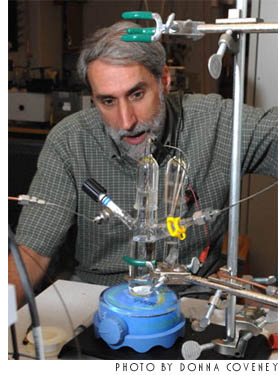
 Back in May of 1935, Charles F. Kettering of General Motors told Modern Mechanix & Inventions magazine that if we could only unlock the secrets of photosynthesis and harness them, we’d have found the way to create almost limitless, inexpensive energy.
Back in May of 1935, Charles F. Kettering of General Motors told Modern Mechanix & Inventions magazine that if we could only unlock the secrets of photosynthesis and harness them, we’d have found the way to create almost limitless, inexpensive energy.
Researchers at MIT seem to have cracked that nut in a way they hope will turn each of our homes into its own power station – and filling station – with a process that can cheaply and effectively store electricity from solar (or other) sources using common carbon-free materials at room temperature.
Storing and transmitting energy is a lot more difficult than you’d suppose. There are inevitable losses as energy passes through power lines. That’s why the extensive wind farms being built these days provide regional, not national, power. In fact, about a gazillion years ago when I worked at the Diablo Canyon nuclear power plant on California’s central coast, that plant was linked to an underground hydroelectric plant. In off hours the nuclear plant’s energy was used to pump the subterrainean reservoir uphill so that in peak times the water could rush downhill and power turbines that supplemented the nuclear plant’s output. Very clever, really, but there were still substantial losses in energy because of friction.
And storing solar power for later use at night is one of the problems that continue to face the solar power industry.
This new process developed at MIT – due in part to the funding of a ten million dollar grant from the Chesonis Foundation – is a very simple technique that uses electrical current to separate oxygen and hydrogen in gaseous form, later to be recombined to produce power or charge fuel cells. The result could be the near complete decentralization of power. Each home would become its own solar power plant and filling station for the fuel cells we’ll need to power our electric cars. It’s the sort of energy system you’d expect to need in outer space – but you’d be using it at home.
In practice, I’d expect that homes would remain on the grid but that demand from the central power stations would drop tremendously as these homes began to generate their own power. In fact the excess power could even be sold back to the utilities. This process is intended to make solar power more effective but it only requires an electrical current to work – so it could be used with any electric sources, including wind farms, which also have a greater or lesser output depending on the conditions outside.
And couldn’t this same process be used in a centralized way to produce the still-expensive hydrogen fuel cells that remain a barrier to fully electric cars?



